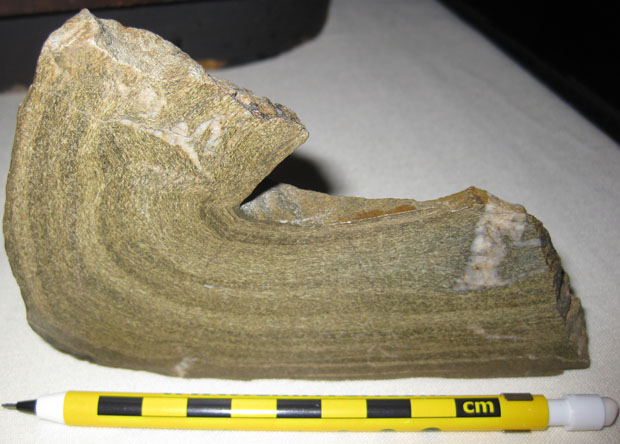
At last weekend’s northeastern / north-central GSA meeting in Pittsburgh, David Saja of the Cleveland Museum of Natural History presented a talk entitled, “Geometric Analysis of Folded Greywacke Layers from Pacheco Pass, California.” [Abstract link]
In addition to the standard PowerPoint presentation that 99% of GSA speakers use, David also brought in some hand-samples (what we in the business like to call pocket folds) to display. As his title implies, these are graywacke layers a few cm thick that were deposited with shale layers as part of a turbidite sequence. They were gracefully deformed when they got scraped off the Farallon Plate and slathered onto the western nose of the North American continent during Mesozoic subduction and the accompanying development of the accretionary wedge that makes up the Coast Ranges of California. They are part of the Franciscan complex.


David obligingly granted me permission to photograph the specimens and share them with you via this blog.
Happy Friday to all!

Interesting photographs. But what I find more interesting is the pen, where do you get these?
Contact Little River Research and Design in Carbondale, Illinois. It’s a promotional product that they made. Pretty cool, eh?
Yes, absolutely cool. And such a simple idea.